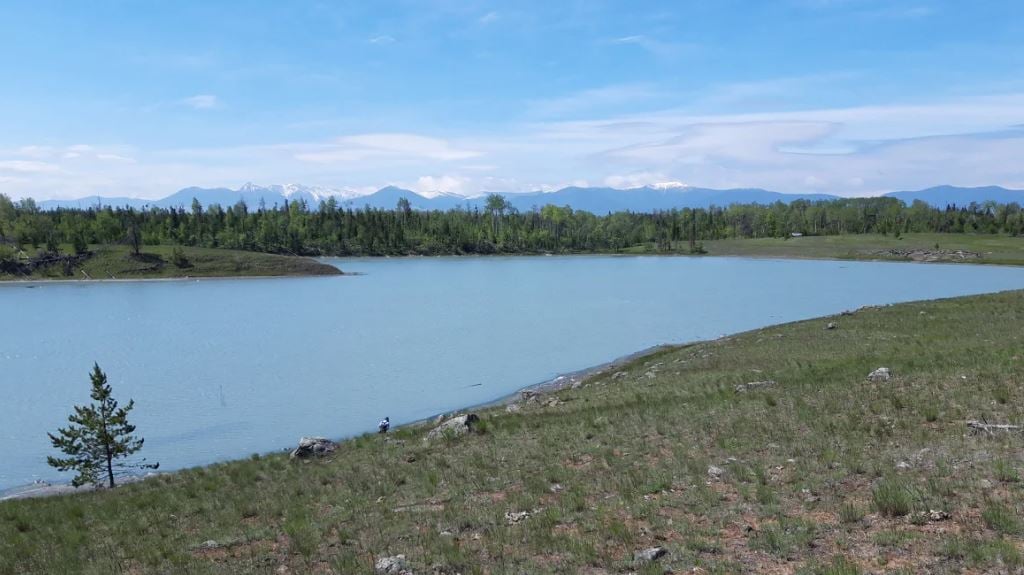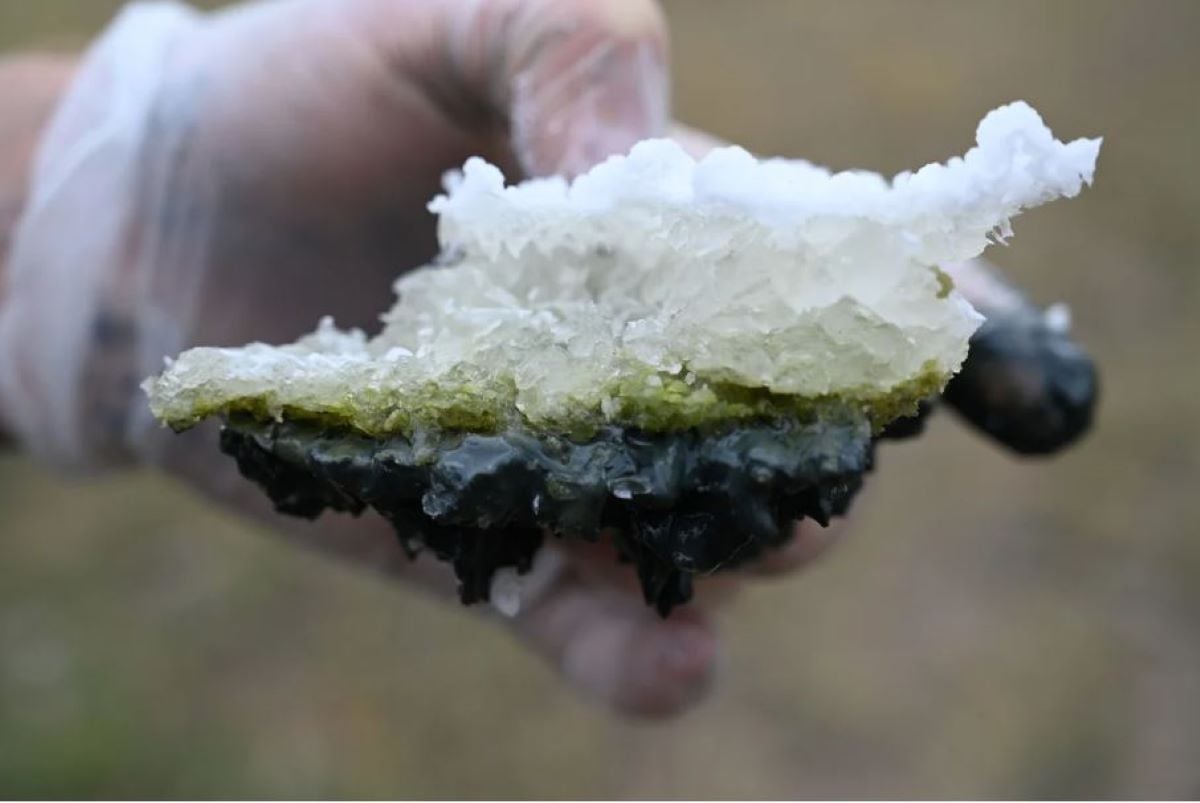
It may hide a shallow lake known for its salty water Secret The origin of life on Earth. Scientists believe that the chemical composition of water may be the basis for the source of life.
Some have hypothesized that the image of the barren world resembling the volcanic landscape in which the waters of this lake boil may be precisely the image of the origin of life, and not the current image that most scientists are circulating regarding the oceanic environment.
In fact, a study focusing on Last Chance Lake in British Columbia, Canada, provides new support for this idea.
The shallow, salty body of water embedded in volcanic rock — known as the Last Chance Lake — contains evidence that carbonate-rich lakes on ancient Earth could have been the “cradle of life,” according to a study co-authored by David Catling. The University of Washington Earth Sciences professor says the discovery, published in the journal Nature on January 9, could advance scientific understanding of how life began.
Life's secret
“We were able to look for the specific conditions that humans use to assemble the building blocks of life in nature,” Catling said. “We think we have a very promising place for the origin of life.”
Catling and his colleagues first realized that the lake could be the focus of their research when, after reviewing the literature, they discovered an unpublished master's thesis from the 1990s, which documented unusually high levels of phosphate in its waters. But the researchers had to see it with their own eyes.
Last Chance Lake
Last Chance Lake is no deeper than 30 points. It is located on a volcanic plateau in British Columbia, more than 1,000 meters above sea level, and contains the highest levels of concentrated phosphate ever recorded in any natural body of water on Earth. An important element in biological molecules, phosphate is a chemical compound that contains the life-giving element phosphorus. It is found in molecules such as RNA and DNA, as well as in ATP, the molecule necessary for energy production in all forms of life.
The abundance of phosphate in Last Chance Lake is more than 1,000 times greater than is typical in oceans or lakes, according to Sebastian Haas, a postdoctoral researcher who studies the microbiology and chemistry of aquatic environments at the University of Washington, and led the study.
In the period between 2021 and 2022, the research team visited Last Chance Lake to collect and analyze water and sediment samples.
It was then that they discovered that Lake Last Chance is not only a nursery for phosphate, but also for the mineral dolomite, which allows phosphorus to accumulate in this environment and is formed as a result of a reaction in the lake between calcium, magnesium and carbonate.

Complex chemical processes, influenced by minerals in the volcanic rock on which the lake formed, combined with an arid climate, created unique concentrations of phosphate — a set of conditions that researchers believe could one day give rise to life on Earth. Earth, according to Haas. “We add credibility to the idea that this type of environment would be suitable for the emergence of life, which is plausible,” he said.
Last Chance Lake is not only 4 billion years old, in fact, it is estimated that it has been around for less than 10,000 years. The region is just a modern counterpart, a physical snapshot of the past that ultimately provides scientists with the opportunity to better understand what the primordial Earth looked like outside the laboratory.
“We have every reason to believe that similar lakes appeared on the first Earth, which formed about 4 billion years ago, because the volcanic rocks in which Last Chance Lake is located are essentially a prerequisite for the formation of soda lakes,” Haas said. . “And what we're partly showing here is that the water chemistry in soda lakes is the prerequisite for these high phosphate levels.”
The secret of Darwin's warm lake
“Soda lakes,” such as Last Chance Lake, are shallow bodies of water that contain vast amounts of dissolved sodium and carbonates — such as baking soda — that typically come from interactions between water and volcanic rock. They can be found all over the world, but are much less common than other bodies of salt water. “This type of lake has the highest levels of phosphate that match what people use in the lab to make (genetic molecules),” Catling said.
When scientists attempt in the laboratory to reproduce the chemical reactions that create biomolecules thought to be essential to the origin of life, the necessary phosphate concentrations are up to a million times higher than those typically found in the world's natural waters.
“If we had this type of lake on ancient Earth, it would have been very high in phosphate, just like Last Chance Lake,” Catling added.
Scientists have long targeted such bodies of water as potential sources of primitive life. In the 19th century, Charles Darwin first wrote about the “little warm lake” theory, which proposed that warm, shallow, phosphate-rich lakes could have formed the first molecules of life.
“Part of what (Darwin) envisioned were these flowing lakes… like Yellowstone,” said Matthew Pasek, a professor at the University of South Florida who studies phosphorus chemistry and the origins of life.
The secret of marine origin
But this is not the only popular theory about how life first appeared on Earth billions of years ago. The other reason is that life began in hydrothermal vents deep in the sea. Pasek, who was not involved in the research, said the new study adds to the body of evidence supporting the warm lake hypothesis.
“The main point, that there can be such high concentrations of phosphate in these lakes, is certainly reinforced by this result. This shows that this is how this could happen,” Pasek says.
However, phosphate in huge quantities is not the only substance needed to create life. Basic requirements also include sources of carbon and nitrogen, as well as the appropriate chemical and physical elements – including phenomena known as wet-dry cycles – and to allow the formation of the necessary chemical compounds and reactions.
The secret that…is missing from the lake
But the authors said they do not dispute that today's Last Chance Lake contains all the ingredients needed for the building blocks of life. They simply claim that the lake contains some important pieces.
“Today's Last Chance Lake does not contain enough of the chemicals that we now think may have been crucial for the origin of life,” Haas said, citing cyanide as an example. Previous studies indicate that the primitive version of Lake Soda may have contained this substance.
While this work “does not uniquely resolve the question of where life originated,” according to Woodward Fisher, a geobiologist at Caltech (who was not involved in the study), it “sheds light on the environments on Earth today, which “Scientists can discover it.” “Study in more detail, to better understand the mechanisms responsible for the birth of life on our planet and perhaps elsewhere.”
Secret… Mars
If life appears in soda lakes on Earth, rather than at the bottom of the ocean, this knowledge could theoretically help in the search for evidence of extraterrestrial life.
“If you think life came from the ocean floor, you can take a closer look at the subglacial oceans on the moons of Saturn and Jupiter,” Haas said. “But if you believe that life came from the surfaces of the Earth, then planets like Mars may be much more important.”
The same type of rock formation that produces soda lakes can be found on much of the surface of rocky planets, such as Mars, suggesting that life may have formed in a similar way elsewhere in the universe.
“Understanding how life arose on Earth is of such importance in our search for extraterrestrial life,” Haas told CNN. “A better understanding of how life arose on Earth tells us where to look for life on other planets or moons of other planets in the solar system.”

“Total alcohol fanatic. Coffee junkie. Amateur twitter evangelist. Wannabe zombie enthusiast.”





More Stories
Is this what the PS5 Pro will look like? (Image)
Finally, Windows 11 24H2 update significantly boosts AMD Ryzen – Windows 11 performance
Heart Surgeon Reveals The 4 Things He ‘Totally Avoids’ In His Life